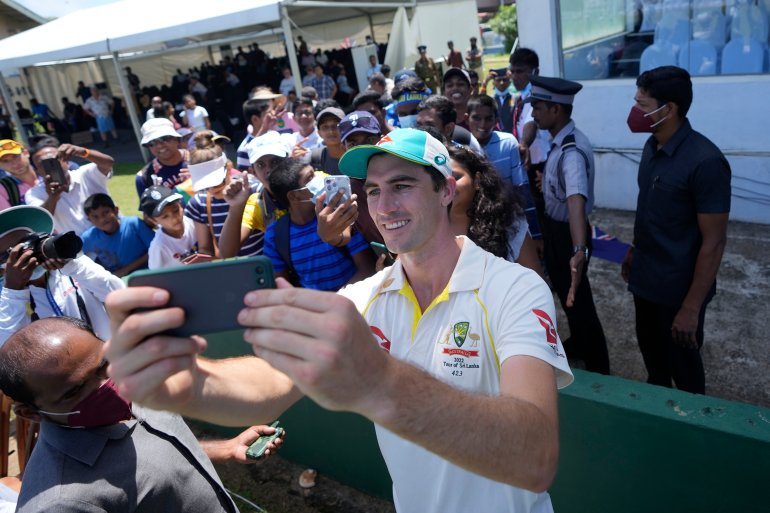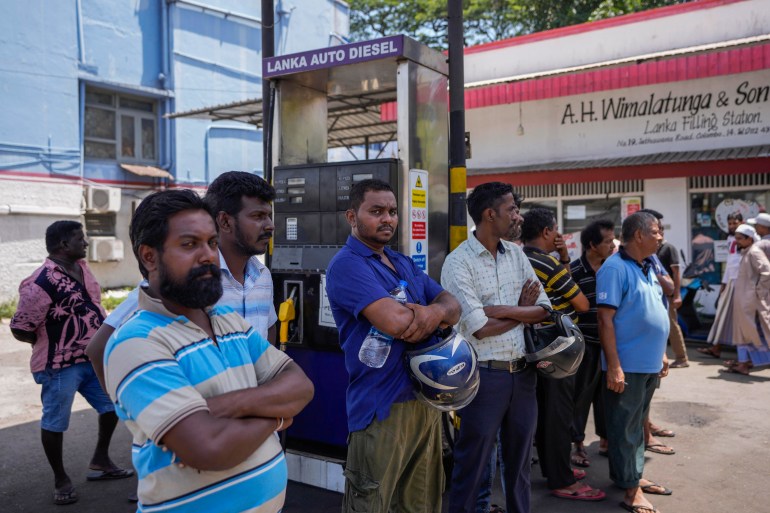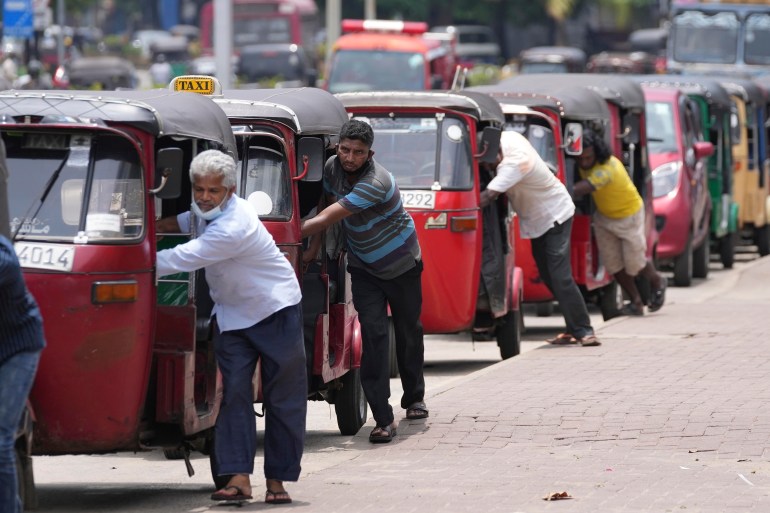Cricket is ‘mental healing’ for many in crisis-hit Sri Lanka
Sport becomes a welcome distraction for Sri Lankans looking for a break from the effects of the economic crisis in the country.

Nilantha said he had planned to suggest his son play cricket, an expensive game by Sri Lanka’s standards, but his life changed quickly with the economic crisis and his plans were shattered.
“We love cricket but we can’t spend all our time on cricket, with the employment problems and all of that. But I expect to get some relief from the pressures by watching cricket.”
‘Only have cricket in times of sadness’
Cricket, a legacy from British colonisers, has become part of the local culture in Sri Lanka as in many South Asian and Caribbean nations. It has been looked upon as a unifying factor in a country torn apart by racial, religious and political discord.
Even a bloody quarter-century civil war did not hamper the progress or the following of the sport in Sri Lanka.
The now-defeated Tamil Tiger rebel group which fought for an independent state silenced their arms for the 1996 World Cup final, when Sri Lanka beat Australia to win the title.
Teenager Theekshana Nethumaksila was at the scenic cricket ground in Galle, having travelled from the neighbouring city of Matara by train.

The 16-year-old Nethumaksila is scheduled to sit for public exams this year but is unable to prepare properly because the schools are closed.
“We only have cricket in times of sadness,” he said. “We come here to watch cricket to get it off our minds.”
Before going ahead with the tour, the Australian cricket team had to contemplate whether it was ethical to travel to Sri Lanka and play when local people were struggling even for basic needs.
The tour involved a three-game Twenty20 International (T20I) series, won by Australia, and a five-match One Day International (ODI) series, won 3-2 by Sri Lanka.
The Australian team’s decision to go ahead with the tour earned them admiration from fans who turned up at the fifth one-day match last month dressed in yellow – the colour of Australia’s ODI uniform – to thank them for entertaining them and sending a positive message about Sri Lanka to the world.
Some of the Australian players returned the favour. Led by captain Pat Cummins, many used social media to say they appreciated the outpouring of support they had received from the Sri Lankan fans.
Australia won the first Test match by 10 wickets, leaving Sri Lanka with a chance to square the series when the tour concludes with the second Test starting on Friday, also at Galle.
